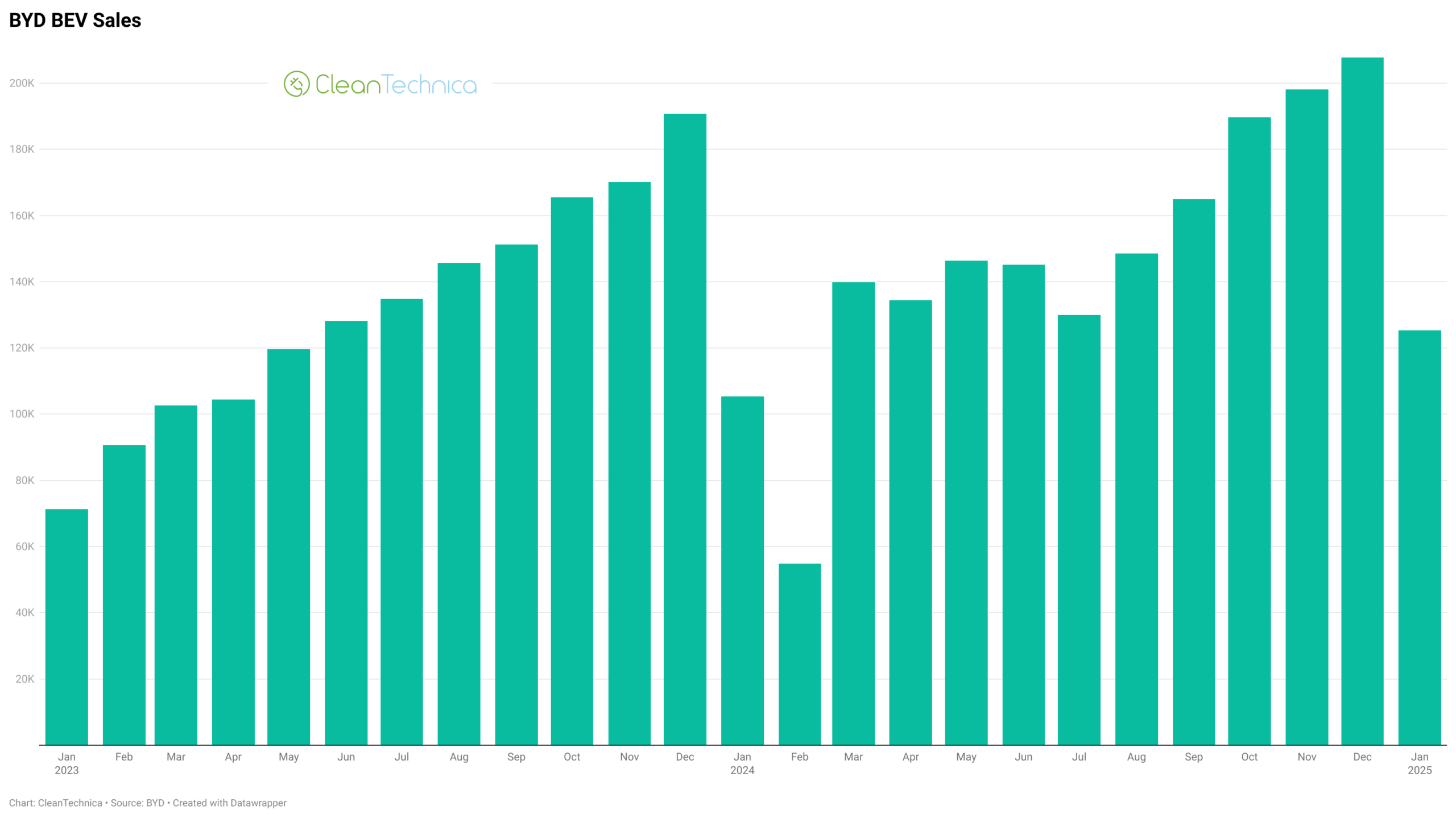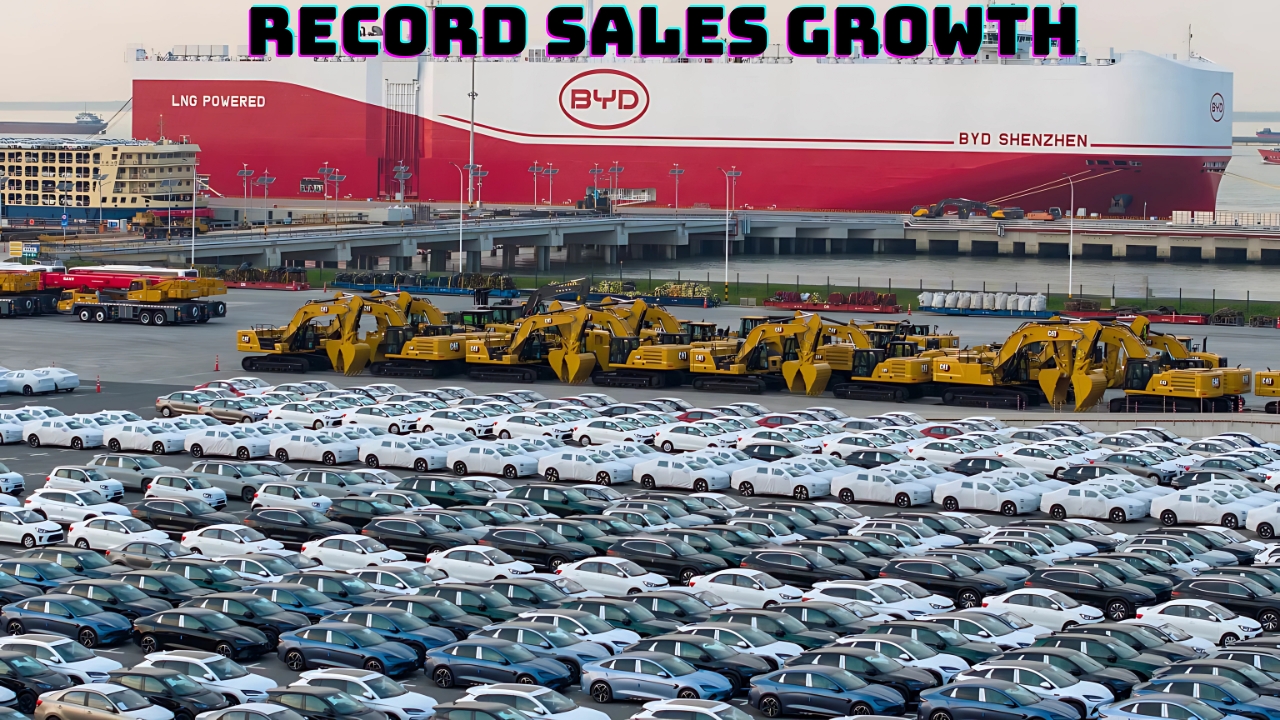BYD’s Australian Sales Growth: BYD’s journey in Australia is nothing short of remarkable. From facing a significant stop-delivery notice for their popular Atto 3 in late 2022 to achieving record-breaking sales by 2024, this Chinese automaker has proven that setbacks can become stepping stones to success.
The company has not only bounced back from early compliance challenges but has also set its sights on an ambitious goal: overtaking Toyota as Australia’s number one car brand by 2027. With Australian BYD sales totalled 20,458 in 2024, well short of its 25,000 target but still up 64.5 per cent on 2023, the trajectory is impressive despite missing initial targets.
What Caused the 2022 Stop-Delivery Notice?
The Atto 3 delivery pause wasn’t about quality or safety fundamentally. Instead, it centered around a very specific Australian Design Rule (ADR) compliance issue that caught both BYD and its local distributor EVDirect off guard.
The BYD Atto 3 does not have an accessible top tether child restraint anchor point in the rear centre seat. This particular issue may be unique to Australia, given that such a tether point is required for compliance for all five-seat passenger-vehicle in Australia. The regulatory requirement is crystal clear – every rear seat with a seatbelt must feature an accessible top-tether point for child seats.
The Technical Details Behind the Issue
Here’s where it gets interesting for us car nerds. Wheels understands that the requisite top tether mounting is incorporated into the seat, but is hidden behind fabric of the backrest. The infrastructure was actually there, just not accessible according to Australian standards.
The solution was surprisingly simple. As EVDirect CEO Luke Todd explained to industry media, addressing this required “little more than a Stanley knife with a very professional operator” to make the anchor point accessible.
How BYD Resolved the Compliance Challenge
The company took immediate action and didn’t mess around. BYD Automotive regret to inform that we will be pausing deliveries of the Atto 3 for seven days commencing 21 October 2022, though this pause extended to approximately four weeks as they worked with federal regulators.
Safety remained the top priority throughout the process. The company issued clear guidance to existing owners and worked diligently with authorities to implement proper modifications.
The Official Resolution

BYD is conducting a Voluntary Safety Recall on all affected vehicles. The rear centre seat child restraint anchorage and front passenger seat as a safety precaution should not be used with a child seat until we have carried out a minor modification. This recall affected 703 Australian Atto 3 vehicles and was completed free of charge.
The modifications included two key changes:
- Making the rear-centre seat anchorage point accessible for child seat installation
- Disabling ISOFIX points in the front passenger seat to prevent inappropriate child seat placement
BYD’s Explosive Global Growth in 2024
The numbers are absolutely staggering. BYD sold a record-breaking 514,809 new energy vehicles (NEVs) in December, bringing the cumulative 2024 sales to 4,272,145 units, up 41.3% compared to 3 million in 2023. This achievement marks the first time BYD has sold over 4 million vehicles annually.
What’s really impressive is the split between vehicle types. BYD sold 2,485,378 passenger PHEVs (plug-in hybrid vehicles) in 2024, up 72.8% from 1.4 million in 2023. Plug-in hybrids represented 58.5% of BYD’s total sales in 2024. This shows that Australian consumers aren’t alone in embracing plug-in hybrid technology.
Global Market Position
BYD is now breathing down Tesla’s neck. Recently published data suggests that despite BYD’s sales heroics, the brand came tantalisingly close to usurping Tesla in 2024 for EV sales. Last year saw Tesla ship 1,789,226 vehicles. While Tesla still leads in pure EVs, BYD’s total volume now likely exceeds both Ford and Honda globally.
Australian Market Performance: The Real Numbers
Let’s dive into how BYD performed locally in 2024. The Seal EV sedan was its biggest seller (6393 sales) ahead of the Sealion 6 PHEV (6198), the Atto3 compact EV SUV (5751) and Dolphin EV small car (2116).
The Australian appetite for plug-in hybrids is particularly noteworthy. The Sealion 6 PHEV’s strong performance demonstrates that Aussie buyers are embracing the flexibility of having both electric and petrol power in one package.
Market Share and Competition
BYD’s growth trajectory in Australia is accelerating rapidly. BYD says it has now sold 40,0000 full battery electric and plug in hybrid cars in Australia, and plans to double that by the end of the year. If achieved, this would represent an incredible 100% growth year-over-year.
The brand now operates through an extensive dealer network. The Chinese brand now has over 40 retail locations nationwide, and offers servicing through over 40 mycar locations, providing comprehensive coverage for Australian customers.
Ambitious 2027 Target: Taking on Toyota
Here’s where things get really exciting. BYD has grown massively since arriving in Australia with the Atto 3 in 2022, and its local importer thinks it’ll beat Toyota in 2027… or come close. EVDirect founder Luke Todd has consistently made bold predictions that have largely come true.
The numbers required are substantial but not impossible. Based on 2024 industry sales figures, BYD would need to sell more than 70,000 vehicles in a year to become a top-five player. Fifth-placed Mitsubishi recorded 74,547 sales last year. To challenge Toyota’s dominance, they’d need to reach approximately 240,000 annual sales.
The Product Pipeline Supporting Growth
BYD’s expanding model range provides multiple pathways to increased sales. The recent introduction of the Shark 6 plug-in hybrid ute represents a strategic move into Australia’s beloved utility vehicle segment, while the Sealion 6 continues performing strongly as Australia’s second top-selling PHEV.
Value positioning remains crucial to BYD’s strategy. Its target will be boosted by the new ‘Essentials’ range which includes the Dolphin Essential, Australia’s most affordable EV and the first to break the $30,000 barrier (retailing for $29,990, before on-road costs).
Global Expansion Strategy and Local Impact
BYD’s international ambitions directly benefit Australian operations. Chinese electric vehicle giant BYD aims to double its sales outside China to more than 800,000 cars in 2025 and will look to overcome tariffs by assembling cars locally. This global scale provides economies of scale that help keep Australian pricing competitive.
The company’s approach to international expansion is sophisticated. With governments abroad weighing or levying tariffs against Chinese-made cars, BYD plans to keep its cost advantage by purchasing key components from China and assembling the vehicles in local markets.
Technology Development Investment
BYD isn’t just scaling production – they’re heavily investing in technology. BYD plans to expand the team that works on intelligent software and components such as semiconductors to as many as 8,000 people from the current 5,000. This investment in R&D should benefit Australian customers through improved features and capabilities.
Current Market Dynamics and 2025 Outlook
The Australian EV market is experiencing some interesting shifts. EV sales over the first three months of 2025 are 17,902, sharply down from the 25,552 in the same period in 2024, and almost entirely the result of the fall in Tesla sales, which are down 7,600 over the same period.
This creates opportunities for brands like BYD. BYD is catching up, although mostly through its sales of its plug in hybrids – the new favourite fuel type for Australian consumers – and particularly its Shark 6 plug in ute.
The PHEV Advantage
Plug-in hybrids are clearly resonating with Australian buyers. The combination of electric capability for daily driving and petrol backup for longer journeys addresses range anxiety while providing the benefits of electric motoring for most trips.
BYD’s timing with PHEV technology appears perfect. As charging infrastructure continues developing across Australia, PHEVs provide an ideal transition technology for consumers not yet ready to commit fully to battery-electric vehicles.
Lessons Learned from the 2022 Challenge
The Atto 3 compliance issue taught valuable lessons about local market requirements. Rather than viewing it as a setback, BYD and EVDirect used the experience to strengthen their understanding of Australian regulatory requirements and improve their processes.
Transparency and customer communication became priorities. The company’s proactive approach to informing customers and working with regulators demonstrated a commitment to doing business properly in the Australian market.
Building Trust Through Action
Actions speak louder than words in the automotive industry. By voluntarily pausing deliveries and implementing proper fixes, BYD demonstrated that safety and compliance take precedence over short-term sales targets.
The recall process was handled professionally and efficiently. Owners of affected vehicles will be contacted by BYD Customer Care Team requesting to make an appointment to have your vehicle inspected and rectified, free of charge.
What This Means for Australian Car Buyers
BYD’s journey from compliance challenge to market success story offers several insights for potential customers. The company has demonstrated resilience, adaptability, and commitment to meeting Australian standards and expectations.
The expanding model range provides genuine choice. From the affordable Dolphin Essential to the premium Seal sedan and practical Shark 6 ute, BYD now offers options across multiple segments and price points.
Value Proposition Remains Strong
Despite premium features, BYD maintains competitive pricing. The combination of advanced technology, comprehensive warranties, and competitive pricing continues attracting Australian buyers seeking alternatives to traditional European and Japanese brands.
Local support infrastructure has matured significantly. With over 40 retail locations and comprehensive servicing arrangements, the concerns about support and service that existed in early 2022 have been largely addressed.
Looking Ahead: The Path to 2027
BYD’s Australian trajectory appears sustainable and ambitious. The combination of expanding product range, improving local support, and competitive pricing provides a solid foundation for continued growth.
Market conditions favor brands offering electrified solutions. Australia’s New Vehicle Efficiency Standard and growing environmental consciousness among consumers create tailwinds for brands like BYD with strong EV and PHEV offerings.
Challenges and Opportunities
Scale remains the primary challenge. Moving from 20,000 annual sales to 70,000+ required for top-five status demands significant expansion in production allocation, dealer network, and service capacity.
The opportunity in commercial and fleet markets is substantial. BYD’s expanding range of commercial vehicles and competitive total cost of ownership could accelerate adoption among business customers.
Frequently Asked Questions
Q: Is the BYD Atto 3 safe to buy now after the 2022 recall? Yes, all compliance issues have been resolved and the Atto 3 now meets all Australian Design Rules and holds a 5-star ANCAP safety rating.
Q: How does BYD’s warranty compare to other brands? BYD offers a comprehensive warranty package that has been improved since initial market entry, with competitive coverage periods and terms.
Q: What’s the difference between BYD’s EVs and PHEVs? EVs run purely on battery power, while PHEVs combine electric motors with petrol engines for extended range and flexibility.
The Bottom Line
BYD’s transformation from a company facing delivery suspensions to a serious Toyota challenger demonstrates the dynamic nature of Australia’s automotive market. The 2022 Atto 3 compliance issue, while significant at the time, ultimately strengthened BYD’s approach to the Australian market.
With record global sales of 4.27 million vehicles in 2024 and ambitious local expansion plans, BYD has positioned itself as a formidable force in Australian automotive retail. The combination of expanding product range, improving value proposition, and maturing support infrastructure suggests that Luke Todd’s bold 2027 prediction might not be as far-fetched as it initially sounds.
For Australian car buyers, BYD’s journey represents the emergence of a genuine alternative to traditional automotive brands. Whether they achieve their lofty Toyota-beating goals remains to be seen, but their progress from 2022’s challenges to 2024’s success story demonstrates that in today’s rapidly evolving automotive landscape, almost anything is possible.

